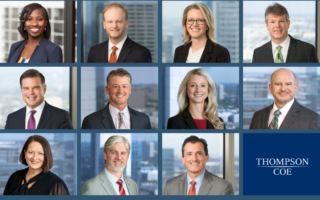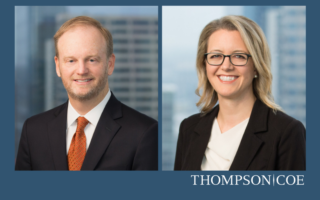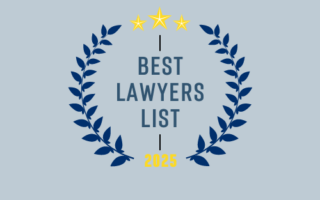Preserving Summary Judgment Error for Appeal
By Wade C. Crosnoe • Sep 21, 2000
I. INTRODUCTION
Texas summary judgment practice presents countless opportunities for waiver of error. Although TEX. R. CIV. P. 166a expressly sets forth the procedure for preserving certain types of error for appeal, Texas courts have often differed on what Rule 166a and the Texas Rules of Appellate Procedure require of summary judgment litigants. The promulgation of TEX. R. APP. P. 33.1(a), which recognizes that error can be preserved by implicit trial court rulings, has created additional uncertainty as courts have struggled to determine when, in fact, a trial court has implicitly ruled.
This paper sets forth the basic rules for preserving the myriad types of error that can occur in summary judgment practice. Where those rules are well-settled, they will be stated without extensive discussion. More substantive attention will be devoted to two issues that remain unsettled: (1) when is it necessary to object to summary judgment evidence and obtain an express ruling to preserve error for appeal; and (2) when does an otherwise interlocutory summary judgment order that contains a Mother Hubbard clause, or similar language, constitute a final and appealable judgment? Finally, the paper will also discuss how courts have adapted the rules governing traditional summary judgment practice to no-evidence motions.
II. THE EXPRESS PRESENTATION REQUIREMENT
A. Express Presentation of Summary Judgment Grounds
A summary judgment motion must “state the specific grounds therefor.” TEX. R. CIV. P. 166a(c). Grounds set forth in a separate brief or the summary judgment evidence do not satisfy this requirement. See McConnell v. Southside Indep. Sch. Dist., 858 S.W.2d 337, 341 (Tex. 1993). If the grounds are not expressly presented in the summary judgment motion itself, the motion is insufficient as a matter of law. Id. at 342. Therefore, the nonmovant need not object to this defect to preserve the complaint for appellate review. Id.
B. Express Presentation of Responsive Issues
Similarly, the nonmovant must “expressly present” the issues that it contends defeat the summary judgment motion in a written response or answer to the motion. Id. at 343; TEX. R. CIV. P. 166a(c). This requirement cannot be satisfied by merely referencing summary judgment evidence, see McConnell, 858 S.W.2d at 341, or by relying on issues set forth in a written answer filed in response to a petition. See City of Houston v. Clear Creek Basin Auth., 589 S.W.2d 671, 677-78 (Tex. 1979). A summary judgment motion must nonetheless stand or fall on its own merits; consequently, the nonmovant’s failure to respond does not authorize the trial court to grant a summary judgment by default. See McConnell, 858 S.W.2d at 343; Clear Creek, 589 S.W.2d at 678. In the absence of a written response, the nonmovant may still argue on appeal that the grounds expressly presented in the motion are legally insufficient to support summary judgment. See McConnell, 858 S.W.2d at 343; Clear Creek, 589 S.W.2d at 678. The nonmovant who fails to respond may not, however, raise any other issues on appeal. See McConnell, 858 S.W.2d at 343; Clear Creek, 589 S.W.2d at 678.
C. Using Special Exceptions to Clarify Ambiguous Grounds and Issues
In McConnell, the Supreme Court of Texas also addressed when a litigant must specially except or object to a defective motion or response. McConnell, 858 S.W.2d at 342-43. Although the nonmovant need not specially except when the motion fails to expressly set forth the grounds for summary judgment, special exceptions are necessary to preserve a complaint that the grounds are unclear or ambiguous. Id. Similarly, any confusion about the issues presented in the nonmovant’s response can also be resolved by special exception. Id. at 343. Special exceptions to a summary judgment motion must be filed and served at least seven days prior to the hearing, while special exceptions to a response must be filed and served not less than three days before the hearing. Id. at 343 n.7. Importantly, the party asserting special exceptions must also obtain a ruling on the exceptions. Id. (citing former TEX. R. APP. P. 52(a)).
D. Applying the Express Presentation Requirement to No-Evidence Motions
Relatively few courts have addressed how the guidelines set forth in McConnell and Clear Creek apply to no-evidence motions. The comment to Rule 166a(i) and emerging case law confirm, however, that the existing rules will continue to govern the general requirements of summary judgment practice. TEX. R. CIV. P. 166a(i) cmt.; Brewer & Pritchard, P.C. v. Johnson, 7 S.W.3d 862, 867 (Tex. App.-Houston [1st Dist.] 1999, pet. granted).
The special exception procedure outlined in McConnell appears particularly well-suited to two problems frequently encountered in no-evidence motions: (1) motions that are ambiguous as to whether they are no-evidence or traditional motions, or both; and (2) no-evidence motions that fail to identify the specific elements on which the movant is claiming there is no evidence, as required by Rule 166a(i) and its comment. In addressing these problems, one court has held that a nonmovant must object to a no-evidence motion that fails to identify the specific elements it is attacking as a prerequisite to raising that complaint on appeal. See Williams v. Bank One, Texas, N.A., 15 S.W.3d 110, 117 (Tex. App.-Waco 1999, no pet.). Another court has taken the opposite tact by deeming a no-evidence motion insufficient, and refusing to even review it, because it did not allege the nonmovant lacked evidence nor challenge any particular element of the nonmovant’s claim. See Weaver v. Highlands Ins. Co., 4 S.W.3d 826, 829 n.1 (Tex. App.-Houston [1st Dist.] 1999, no pet.).
Although neither William nor Weaver cited to McConnell, the courts’ resolution of these issues arguably should have been governed by that case Under McConnell, the issue should be whether the no-evidence motion’s failure to identify the specific elements is properly classified as a problem of unclear or ambiguous grounds, which can be waived, or a failure to expressly present legally sufficient grounds for summary judgment, which cannot be waived. See McConnell, 858 S.W.2d at 342-43.
With respect to a nonmovant’s obligations in responding to a no-evidence motion, the First Court of Appeals has adopted a particularly strict stance. See Brewer & Pritchard, P.C., 7 S.W.3d at 868-69. The nonmovant in that case filed a response setting forth various facts and cited to summary judgment evidence supporting those facts. Id. at 869. Nonetheless, the court held that the nonmovant failed to meet its summary judgment burden by connecting the facts set forth in the response to the specific elements that the movant had challenged. Id. at 868-69. The Supreme Court of Texas has granted review of this case and scheduled oral argument for October 4, 2000. The court will thus have the opportunity to clarify what a nonmovant must do to meet its burden of responding to a no-evidence motion.







